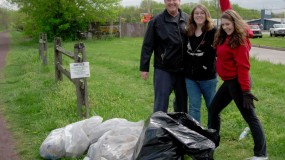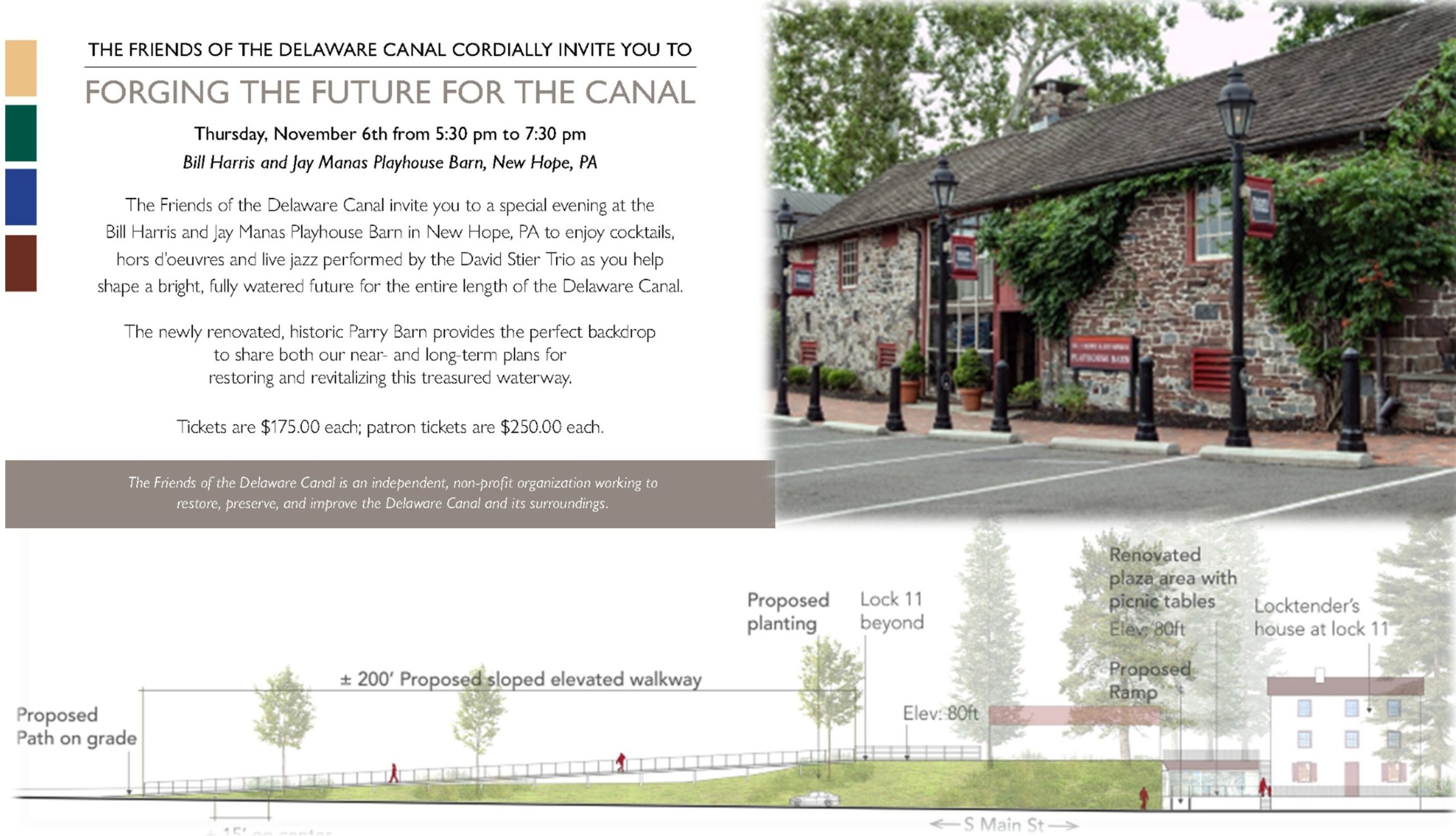Canoe and Kayak Guide to Paddling on the Delaware Canal
Have fun on the Delaware Canal
This publication is designed to provide information for those who would like to canoe or kayak on the canal. A safe paddle is a happy one:
PFD (Personal Flotation Device): Your “life vest” is so named for a reason – it saves lives! Wear your PFD at all times while getting into or coming out of the canal and while paddling in the water. Keep it tightly “zipped up and clipped up” so that it can function most effectively. It is also recommended that protective footwear 9e.g. sneaks or closed-toed water sandals)be worn rather than flip-flops or clogs.
Paddle with others: For any canoe/kayak trip there should be a minimum of three people in at least two boats. For canal paddling it would be good if one boat were a canoe with an experienced paddler who is trained in ACA (American Canoe Association) safety and rescue techniques.
Whistle/Paddle signals: The customary signals on canoe/kayak trips are: 1 whistle = stop and pay attention; 2 whistles = gather together; and 3 whistles = someone needs assistance. There are also standard signals by the leader using a paddle for: go straight ahead following the leader (paddle is held perpendicular to water surface); go to the right/left (paddle is angled to desired direction); or stop paddling (arms raised holding paddle parallel to the water surface).
Lead/Sweep: The leader will designate a lead boat which will go first, and a sweep boat that will remain in the last position. No one should go in front of the lead boat, nor lag behind the sweep boat. No one leaves the trip without prior consultation with the leader.
Safe water fun: Never use a paddle to splash other paddlers in a water fight (too many teeth have been lost that way). Use bailers, water pumps, supersoakers, or just your hands to splash. Also, do not intentionally overturn another paddler’s boat.
Cell phone: Take along your cell phone programmed with an emergency call number in a secure “dry bag.” Be alert as to where you are on the canal in case you need to call for emergency assistance.
There are unique features of the canal that you should consider when planning to paddle on the canal:
Canal banks are steep with no docks (with very few exceptions) or footholds to aid in getting into or out of your boat. The water is immediately deep (where there is water in the canal).
- This is why the minimum 3 people and 2 boats are recommended. Two people can hold a boat, either from the bank or from a boat, while the third paddler enters his/hers.
- It is also wise to have “painters” (lines) attached to both the bow (front) and stern (back) of your boat to aid in lowering it down an extremely steep bank.
- To climb down, or up, a particularly steep bank to the water level you can use your paddle for balance – as well as various parts of your anatomy. Stay low to the ground.
Portaging is necessary: It is necessary to portage around frequent obstructions in the canal such as locks, stop gates, bridges, and low road culverts that do not provide enough head room to float through. Wheels made to ease the hauling of boats on longer portages are useful.
Trip Leader Responsibilities: Each canal venture should have a leader who “scouts” the planned trip route from the towpath by bike or foot in advance of the event. The leader should obtain A Pennsylvania Recreational Guide for the Delaware Canal (i.e. a map)from the Delaware Canal State Park at 11 Lodi Hill Road Upper Black Eddy, PA 18972-9540. The leader should plan and observe the following:
- That there is sufficient water in the part of the canal where you intend to paddle. This is critical while repairs are still being finalized along several stretches of the canal.
- Note any obstructions such as fallen trees, beaver dams, or islands of debris. A tree saw and branch clippers may be called for.
- Plan the trip logistics ahead of time:
- Where will you put in and where will you take out?
- Make sure that sufficient safe parking is available.
- What plans can you make to shuttle vehicle(s) to the take out point?
- What portages will be necessary en route?
- Where will you take rest stops and/or lunch stops?
- Designate lead and sweep boats
- Give a “safety talk” (see safety measures above) to participants before launching the trip.
Transportation: Plan for at least one vehicle to be left at the take-out point to transport other drivers back to their cars.
Car shuttle: This is another reason for having a minimum of three people; one to stay with the boats and gear while the others shuttle the cars. Or, have someone who is not paddling pick up the drivers at the end of the trip.
Round Trip Options: Since the canal has “quiet water” you could plan one of several round trip options that would not require a car shuttle.
- Paddle two ways along your planned route.
- Paddle upstream on the canal, and then, where there is appropriate access, portage over to the Delaware River and paddle downstream back to your start point.
- Plan a bike and canoe/kayak circuit.
End of trip courtesies: No one should leave at the end of the trip without helping each other take out boats and load them on cars/trucks, and/or provide transportation as needed.
Respect Private Property: The Delaware Canal State Park covers the entire 60 mile length of the canal, but the park land is often very narrow, including the canal and pedestrian/bike/mule towpath. It runs through many areas of private land. Please do not take rest stops nor picnic on other people’s private property. There are several county or township park facilities in addition to DCNR facilities along the way. Plan your access and stops accordingly.
Carry in/Carry out: There are few or no trash facilities along the canal. Please make provisions to carry away any trash (bottles, cans, paper, etc.) that you generate. As a good citizen, please take any litter that you find as well. Needless to say that no alcoholic beverages are permitted in the canal park, nor is it safe to consume them while on a paddling trip.
For further canoe/kayak paddling enjoyment:
Attend training classes to learn proper paddling strokes and boating safety that is provided by several organizations in the region.
- Summer lessons are offered by the Delaware Canal State Park at Giving Pond. Consult the park website for a current calendar.
- Find an American Canoe Association certified class or instructor
- Join a canoe/kayak paddling organization to meet and paddle with other enthusiasts of like minded interests, e.g. Piney Paddlers – contact leona@pineypaddlers.com. Leona Fluck is the outdoor events chairperson for the Sierra Club of New Jersey.
- Register your canoe/kayak with both:
PA DCNR – Delaware Canal State Park 11 Lodi Hill Road Upper Black Eddy, PA 18972-9540 or register at any PA state park.
Bucks County Department of Parks and Recreation Core Creek Park 901 Bridgetown Pike, Langhorne, PA 19047.


